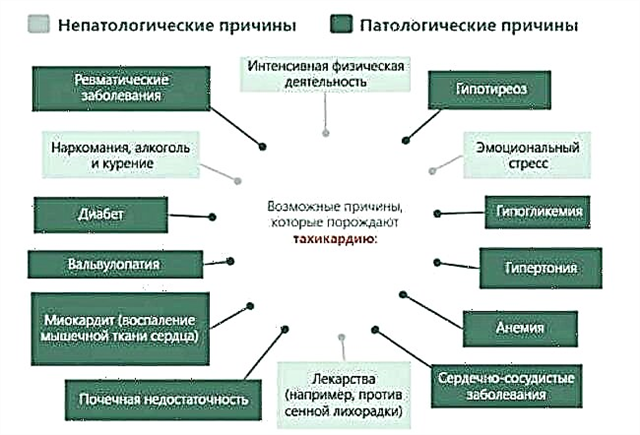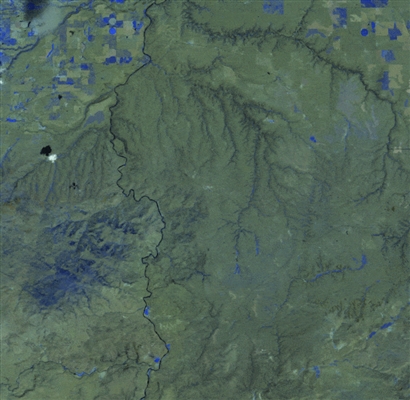The deviation of the shape of the nose from classical standards can bring a lot of inconvenience to its owner. Having a nose that is too long or short, crooked or crooked is associated with a negative perception of such an appearance by other people. This can lead to problems in the development of interpersonal relationships, the performance of official duties, and to limit the choice of a profession.
 The presence of a special configuration or size of the nose leads to insomnia, irritability, and, as a consequence, the development of other somatic diseases, such as peptic ulcer, cardiovascular disorders, skin pathology, etc. A change in the shape of the nose is a consequence of deformation of the bone or cartilaginous tissue that constitutes it frame.
The presence of a special configuration or size of the nose leads to insomnia, irritability, and, as a consequence, the development of other somatic diseases, such as peptic ulcer, cardiovascular disorders, skin pathology, etc. A change in the shape of the nose is a consequence of deformation of the bone or cartilaginous tissue that constitutes it frame.
Most often, the pathological process is characterized by a curvature of the nasal septum and, as a result, a violation of nasal breathing. The result of this pathological process is the drying out of the nasal mucosa.
This contributes to the development of otitis media, sinusitis and respiratory diseases transmitted by airborne droplets.
Signs of impaired nasal breathing
Due to the violation of nasal breathing, a smaller amount of oxygen enters the brain, which leads to the phenomena of hypoxia. This process is characterized by headache, impaired memory and attention, rapid fatigability. Additional signs of curvature of the nasal septum are a tendency to nosebleeds. They are due to the fact that insufficiently moistened mucous membrane is prone to the formation of crusts, when rejected, an erosive bleeding surface is formed.
An indirect sign of the presence of a deviated nasal septum is snoring due to the difficulty in passing the inhaled air through the nasal passages.
The reasons for this situation can be both traumatic injury and congenital developmental anomalies. What if the nose is crooked? It all depends on the presence or absence of accompanying symptoms.
 It is important to determine whether the problem is only aesthetic in nature, or whether the external manifestations are due to deep anatomical disorders. In deciding what to do if your nose is crooked, you need to trust the experts.
It is important to determine whether the problem is only aesthetic in nature, or whether the external manifestations are due to deep anatomical disorders. In deciding what to do if your nose is crooked, you need to trust the experts.
The otolaryngologist will perform a rhinoscopy, if necessary using modern endoscopes. An X-ray examination of the nose and paranasal sinuses will be performed without fail, usually in two projections. If necessary, computed tomography and magnetic resonance imaging can be performed.
Therapeutic tactics
Straightening the nose is possible using rhinoplasty surgery. Depending on the required volume of surgical intervention, the operation can be presented in the form
- septoplasty;
- submucosal resection;
- laser correction.
Septoplasty is an operation to straighten the nasal septum. The indication for such treatment is severely deformed bone tissue. Submucosal resection involves the removal of only an area of curved bone tissue.
You can also straighten your nose using a laser. Such a correction can be discussed if the curvature of the nasal septum is minimal.
Exposure to the high temperature of the laser softens the cartilage tissue, making it more pliable, allowing for modeling procedures. However, this technique has not yet received widespread distribution, due to the high cost of such operations.
Curvature of the nose can be noted in the upper, middle and tip region. In this case, the deformation in the upper third is due to the deviation of the bone tissue, while the curvature of the middle section and the tip is associated with the deviation of the cartilaginous tissue. To align the nose in the upper section, an osteotomy is performed. It consists in a fracture of the nasal bones and their displacement in the required direction. The effectiveness of this surgical intervention is quite high.
 The operation to straighten the middle section and the tip of the nose is technically more difficult and less effective in its result. The need for repeated rhinoplasty to correct the postoperative curvature is at least 5% of the total number of interventions performed.
The operation to straighten the middle section and the tip of the nose is technically more difficult and less effective in its result. The need for repeated rhinoplasty to correct the postoperative curvature is at least 5% of the total number of interventions performed.
This is due to the fact that cartilage tissue is characterized by the ability to return to its original position. The consequence of this drift is the return of the deformation to the initial level. The operation on the deformed tip of the nose is even more difficult.
Its shape and size is due to two cartilages that are not attached to the bone base. Exposure to them, attempts to excision can lead to twisting of the cartilage, and, as a consequence, a more severe course of the operation, a dubious outcome. For a radical solution to the question of how to straighten the nose in this situation, it may be necessary to use cartilage transplantation.
Nose straightening is not the only operation performed in this area. Often the task of the surgeon is to reduce the size of the nose, change the shape. In rare cases, it can be a question of lengthening the tip of the nose or performing an operation that contributes to a true increase in length. When choosing a technique for the operation, the shape of the nose and its tip are examined. In this case, the maximum elongation of the nose can be achieved using a graft.
Rehabilitation period
The duration of the recovery period after the operation depends on
- the volume of surgery performed;
- surgical access, open or closed;
- individual characteristics of the patient (thickness of the skin and subcutaneous fat);
- performed postoperative care.
With open access, an external skin incision is made at the base of the nose. This simplifies the course of the operation, allows for a clearer assessment of the necessary corrective measures. However, the recovery period is longer than with the endonasal approach. Edema will persist for a longer time in patients with a thick layer of skin. At the same time, high-quality postoperative care prevents the development of secondary infection, other complications, and also promotes early rehabilitation.
The swelling of the nose usually goes away within one month, although the swelling persists for a year.
 In this regard, it is possible to evaluate the results of surgical intervention only after 12-24 months. Due to the presence of swelling immediately after surgery, the apparent improvement is not the true result. The effectiveness of nose straightening surgery needs to be judged later. After a time, when the swelling disappears, all the results of the performed rhinoplasty become more obvious. In the event that a second operation is required, it should not be performed earlier than 6-9 months after the first. The final and long-term prognosis can only be judged 5 years after surgery.
In this regard, it is possible to evaluate the results of surgical intervention only after 12-24 months. Due to the presence of swelling immediately after surgery, the apparent improvement is not the true result. The effectiveness of nose straightening surgery needs to be judged later. After a time, when the swelling disappears, all the results of the performed rhinoplasty become more obvious. In the event that a second operation is required, it should not be performed earlier than 6-9 months after the first. The final and long-term prognosis can only be judged 5 years after surgery.
Using fillers
Another way to correct a crooked nose is to use fillers. These can be either permanent silicone substitutes or injectable temporary fillers. Their introduction into a section with a recess leads to its filling. Thus, the curvature is smoothed.
The most common temporary fillers are Botox and Restylane.
The disadvantage of such corrective procedures is the resorption of temporary fillers within 8-12 months.This forces you to repeat the same procedure.
You can also correct a crooked nose using fillers based on silicone and biopolymer gel. The use of these materials is able to maintain the effect for several years. However, a serious disadvantage of using biomaterials is their possible rejection and migration within tissues.
Rhinoplasty is as serious a surgical treatment as any other intervention. It can be done under local or general anesthesia. All the requirements necessary in other cases of surgical treatment apply to it. The plastic surgeon needs to weigh all the perceived risks and consequences of the operation. The patient must be informed about possible complications.



